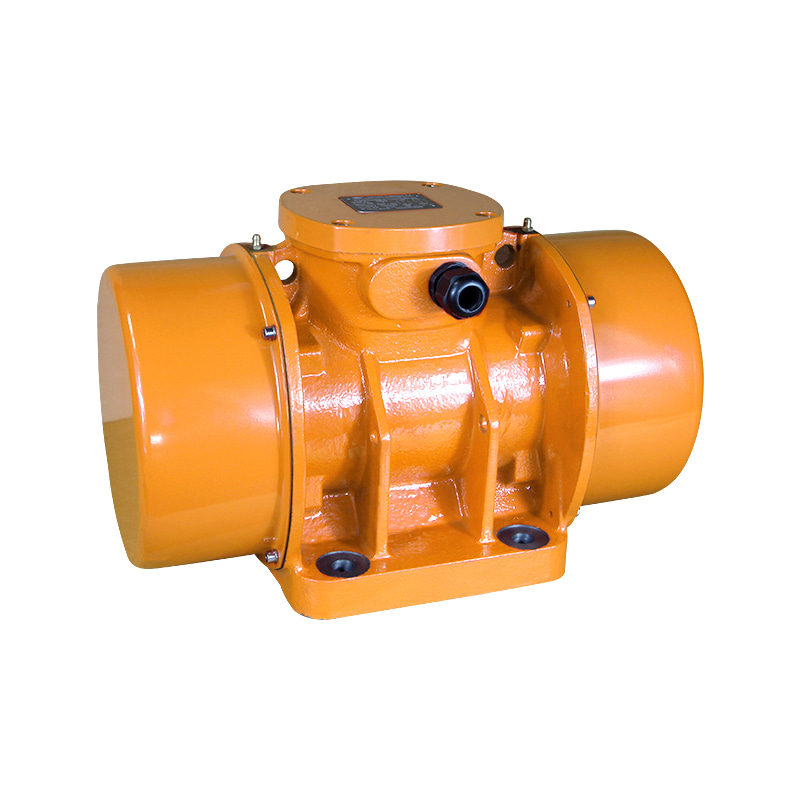In the realm of heavy-duty machinery and material handling, the Industrial Three Phase 2 Poles Electric Vibration Motor stands out as a critical component driving efficiency, reliability, and productivity. Engineered to deliver consistent performance in the demanding environments, this type of vibration motor plays a key role across a variety of industries including mining, construction, pharmaceuticals, and food processing.
What is an Industrial Three Phase 2 Poles Electric Vibration Motor?
An Industrial Three Phase 2 Poles Electric Vibration Motor is a high-speed electromechanical device designed to generate controlled vibrations. These motors utilize three-phase AC power to create a rotating magnetic field, which, in combination with a two-pole design, enables high-speed operation—typically around 3,000 RPM at 50 Hz or 3,600 RPM at 60 Hz. The "2 poles" refer to the number of magnetic poles in the stator winding, which directly influences the motor’s speed.
This high-speed rotation, when combined with offset weights on the motor’s shaft, produces linear or circular vibration. These vibrations are essential for numerous industrial tasks such as conveying, screening, compacting, and feeding materials.
Key Features of the Industrial Three Phase 2 Poles Electric Vibration Motor
The Industrial Three Phase 2 Poles Electric Vibration Motor is specifically designed to endure harsh operating conditions and deliver good performance. Here are some of its notable features:
High Speed and Efficiency: With a two-pole configuration, the motor operates at higher speeds, making it proper for applications that require fast and consistent vibrations.
Durability: Constructed with high-grade materials, these motors can withstand exposure to dust, moisture, and harsh temperatures, ensuring longevity in tough industrial environments.
Low Maintenance: The simple yet robust design reduces the need for frequent maintenance, which translates to lower operational costs.
Customizable Vibration Force: By adjusting the eccentric weights, operators can fine-tune the intensity of vibration to meet specific application needs.
Applications of the Industrial Three Phase 2 Poles Electric Vibration Motor
The versatility of the Industrial Three Phase 2 Poles Electric Vibration Motor makes it indispensable in numerous industrial sectors:
Mining and Quarrying: Used to move and separate raw materials such as gravel, coal, and minerals. The motor's consistent vibration helps in sorting and transporting bulk materials efficiently.

Food Processing: Facilitates the smooth flow of granular products like grains, sugar, and spices through conveyor systems and sieves without clogging.
Pharmaceutical Manufacturing: Ensures accurate and hygienic material flow in production lines by enabling precise vibration control.
Construction: Integral to compacting concrete and other construction materials to eliminate air gaps and improve structural integrity.
Packaging and Sorting Systems: Enhances accuracy and speed in automated systems that rely on vibration to align, sort, or transport items.
Advantages Over Conventional Motors
Compared to other motor types, the Industrial Three Phase 2 Poles Electric Vibration Motor offers several key advantages:
Faster Operation: The high-speed nature of the 2 poles design allows for quicker vibrations, increasing throughput in many systems.
Energy Efficiency: The three-phase power supply ensures a balanced and more efficient energy usage compared to single-phase alternatives.
Reduced Downtime: With fewer moving parts and a simpler mechanical design, these motors are less prone to mechanical failure.
Uniform Performance: Designed for continuous operation, they maintain consistent vibration levels even during extended usage.
Considerations When Choosing an Industrial Three Phase 2 Poles Electric Vibration Motor
Before selecting a Industrial Three Phase 2 Poles Electric Vibration Motor, several factors must be considered:
Vibration Force Requirements: Determine the level of force needed for the specific application.
Mounting Configuration: Proper mounting ensures that the motor delivers effective vibration without compromising the equipment.
Ambient Conditions: Choose a motor that can handle the environmental conditions of the installation site, such as moisture, dust, or chemical exposure.
Duty Cycle: Make sure the motor is rated for the intended operational duration and load conditions.

 英语
英语 葡萄牙语
葡萄牙语 西班牙语
西班牙语 русский
русский






 Tel: + 86-576-86320988
Tel: + 86-576-86320988
 Fax: + 86-576-86333217
Fax: + 86-576-86333217
 E-mail:
E-mail:  Add: Dayangcheng Industrial Zone, daxi, wenling, zhejiang, china
Add: Dayangcheng Industrial Zone, daxi, wenling, zhejiang, china
